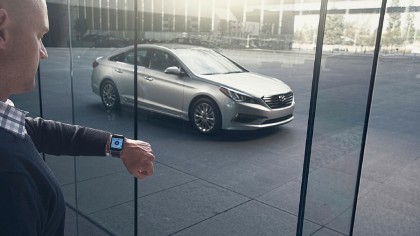Challenges aplenty: what are the roadblocks facing the connected car?
The connected car could prove a major challenge to the IT industry
Can a connected car go out of date?
Not the software and apps – that's the whole point – but the hardware can; think resistive touchscreens versus capacitive touchscreens (either way, your next car will have a touchscreen). However, since the software is cloud-based expect frequent OTA upgrades to connected cars' infotainment systems. Meanwhile, remote diagnostics will help manufacturers identify problems faster, with OTA updates issued automatically to vehicles to help fix problems without the need for a drive to the dealership.
What other technology will be found in connected cars?
Infotainment is just the start. As well as internet radio and smarter in-car navigation, think remote diagnostics obtained automatically by the manufacturer, telematics information on speed and driving style sent to insurers, and both speech and gesture recognition. Cars are already fitted with sensors for lane-detection – expect a plethora of proximity sensors and cameras to record and even relay traffic incidents in real-time.
This could lead to vehicle-to-vehicle communications and the crowd-sourcing of micro driving tips detected via cars' sensors, such as detecting ice on one corner and relaying that information to the vehicles behind.
"There are already a lot of sensors doing lane detection, so perhaps we need a second added layer that lets vehicles exchange information about a driver's intent," says Penrose. "There's just so much potential for real-time exchange of data to make driving safer, but the driver won't be involved at all." That, of course, is the eventual end-game; the self-driving, autonomous car.

How will wearables be integrated into the connected car?
Although some wearables – notably LG's G Watch – have been touted as a navigational device for drivers to glance at while they're driving, that's not the kind of integration most companies are considering for the connected cars of the future. There is a big focus on navigation, but it's more about hopping between devices seamlessly.
"I start in my car using in-car navigation, then I park my car, but I may not yet be at my final destination, so I push my walking directions for the last 500m to my wrist so I can walk the rest of the way," says Penrose. "We're also looking at how wearables can be used for remote services, such as switching on the heater on the car, or to unlock the door."
AT&T is currently working with Samsung's Galaxy Gear software to see how its Tizen OS-based wearables can be integrated into vehicles, as well as seamless integration with phones and tablets, and VoLTE (Voice Over LTE) services.
Are you a pro? Subscribe to our newsletter
Sign up to the TechRadar Pro newsletter to get all the top news, opinion, features and guidance your business needs to succeed!

How important is speech recognition in the connected car?
Very – it's a central tenet of the ambition to create 'multi-modal' connected cars that can be controlled hands-free. Connected cars are being developed because the majority of drivers now expect it in their next vehicle, but it all has to be delivered in a non-distracting way purely for safety reasons.
"Eyes on the road, hands on the wheel is crucial, so speech enablement is important, but so far it's been challenging because of the noisy environment in the car," says Penrose. "But it needs to be both natural language and contextual." Conversational, contextual tech – such as from speech processing toolbox VoiceBox – is likely to grow in use since it allows follow-up questions, and also allows gesture and touch.
Not all connected devices are equal, and the connected car could become one of the biggest and most important connected devices out there. However, if Frost & Sullivan's report predicting that by 2020 more than 90% of vehicles on the road will be connected is to come true, there are busy times ahead for IT integrators, network specialists and app developers.
Jamie is a freelance tech, travel and space journalist based in the UK. He’s been writing regularly for Techradar since it was launched in 2008 and also writes regularly for Forbes, The Telegraph, the South China Morning Post, Sky & Telescope and the Sky At Night magazine as well as other Future titles T3, Digital Camera World, All About Space and Space.com. He also edits two of his own websites, TravGear.com and WhenIsTheNextEclipse.com that reflect his obsession with travel gear and solar eclipse travel. He is the author of A Stargazing Program For Beginners (Springer, 2015),
